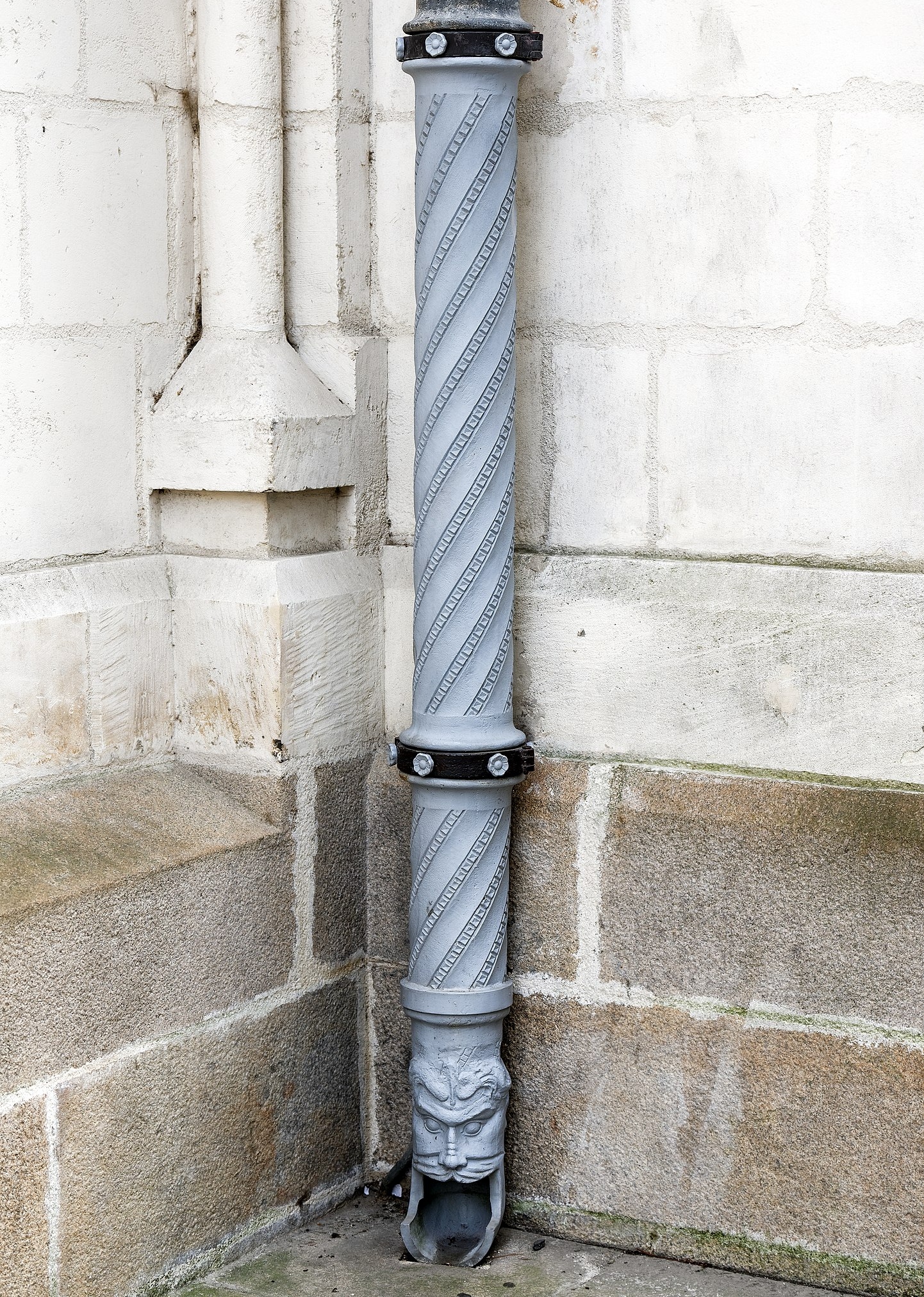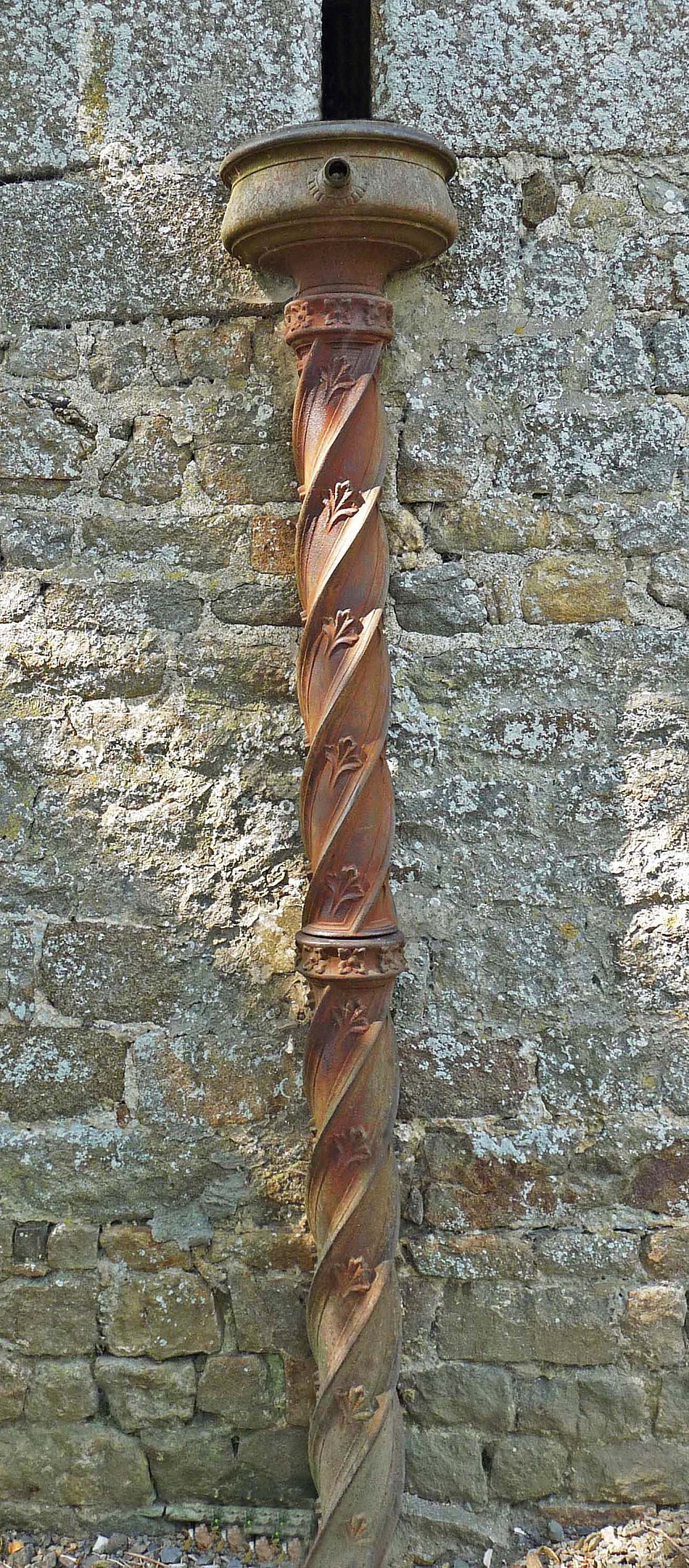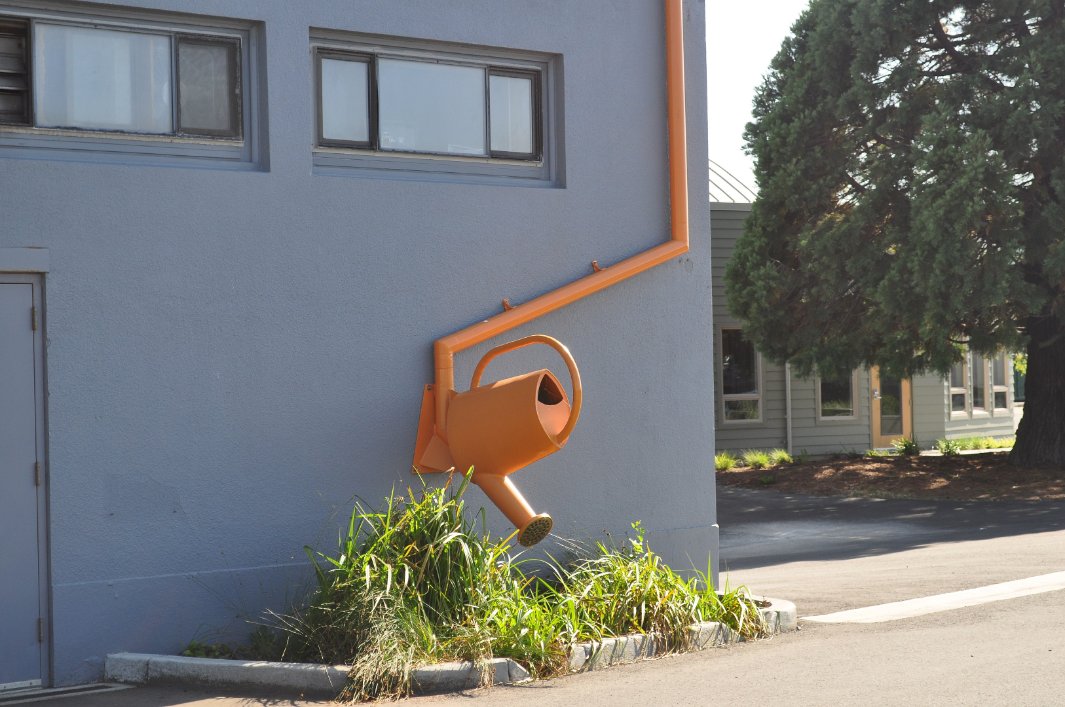Why don't we make interesting drain pipes any more?

Why don't we make interesting drain pipes any more?

These slightly wild drain pipes are almost all from the 19th century, and they weren't created by individual artists but mass-produced with cast iron.

Their origins go back much further, all the way to the Middle Ages and the great Gothic tradition of gargoyles.
Gargoyles are just ornamental water spouts, necessary to direct rainwater away from a church's walls and protect an expensive investment from damage.

Why did Medieval stonemasons transform these purely functional water spouts into works of art?
Well, that's the Gothic mind. They found in everything an opportunity for decoration, symbolism, creation, individual expression, and even rather bawdy humour.




It also speaks to the way most things used to be made. Cathedrals weren't built to an overall blueprint with every element planned out.
Individual stonemasons had the creative freedom to be imaginative, make jokes, experiment, and (it seems) enjoy their labour.


This ornamental tendency returned with the Gothic Revival in the 19th century, whether directly imitative or inspired by Gothic architecture.
But technology had changed. There had been an Industrial Revolution, there was steam power, plate glass, cast iron, division of labour...


And so these ornamental drain pipes were neither functionally necessary nor the result of individual creative freedom.
It was a continuation of the old Gothic idea that what was necessary and functional could also be beautiful or interesting, but on an industrial scale.

Not everybody liked this sort of thing. Many 19th and early 20th century writers complained about "imitation" and the "inauthenticity" of real craftsmanship transplanted into industrial design.
It was a needless relic from an old era, they theorised.

In any case, not every drain pipe looked like that in the 19th century.
Many (if not most of them) were almost wholly functional, with little interest in visual appeal beyond some minor decoration, and were often incongruous with the building where they were installed.

Much like the drain pipes of today, which are simply made to function. Their usual design is probably best described as inoffensive, trying to blend in and go unnoticed.
Sometimes it works, sometimes it doesn't, but there's a reason people cover them up with flower trellices.

As for those 19th century drain pipes, some are funny, some grotesque or even frightening, some simply charming, and others almost beautiful.
But in every case, by doing more than the bare minimum, they add character to a street, house, or town.

Not all these old drain pipes were strange aquatic monsters or grotesque faces.
Sometimes they had a simple, inoffensive visual appeal. The idea was to add something, however small, to a building's appearance - or at least not detract from it.


Architecture is about the details as much as the grand projects and the overall design.
Sometimes a nice lamp post, bench, doorhandle, gutter, fence, wall, or drain pipe makes all the difference.
Even if it only makes your morning commute a little more interesting...

And these were no more expensive than unadorned drain pipes; both were mass-produced, simply using different moulds, like lamp posts.
Would it be inauthentic to make them now, most likely out of plastic? Perhaps. But, as with so much else, the passage of time can work wonders.

The best example is Paris, universally agreed to be one of the world's most beautiful cities.
But the Paris we know was built and designed by Baron Haussmann in the 19th century; when he tore down the old Medieval city he was accused of ugly modernisation.

150 years later those criticisms have gone, and Haussmann's "modern" Paris has become... old. And people love it.
Even the Notre Dame is misleading. The Medieval cathedral was refurbished in the 19th century by Viollet-le-Duc; he built the spire which burned down in 2019.

Another point those original 19th century critics made was that all these fanciful cast iron objects only had ornament for the sake of it.
Not so. Many of them were related to the symbols or the crest or the history of a city; others showed the year of their construction.



Still, a clean and functional design is often beautiful and would be ruined by decoration. Like thatched roofs, which are highly practical methods of insulation and weatherproofing.
There's an elegance to something which does its job; not every drain pipe needs to be decorated.


Yet the world is full of things we simply accept as inherently unpleasant to look at, from street furniture to bins to bus stops.
These drain pipes offer an alternative. They say that what is necessary can also be charming, interesting, meaningful, or even funny.

